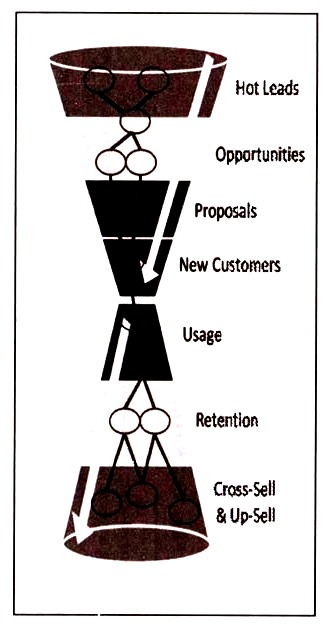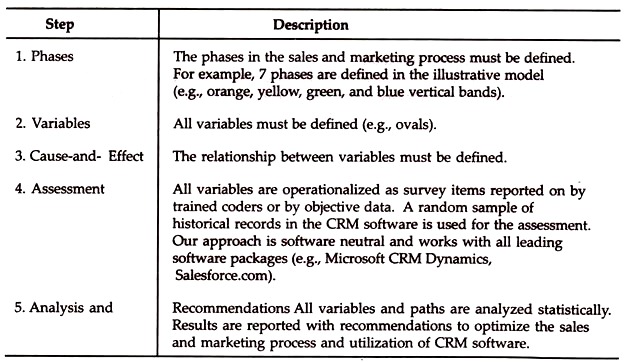After reading this article you will learn about CRM Audit:- 1. Meaning of CRM Audit 2. Objectives and Scope of CRM Audit 3. Techniques.
Meaning of CRM Audit:
The CRM disconnect refers to the gap between sales and marketing strategy and CRM software usage. For example, we have found up to a 70% gap between the espoused sales and marketing strategy and what is actually measured in the CRM software.
In addition to measurement gaps, the CRM audit can provide clarity regarding important variables in your CRM model. For example, one CRM audit revealed that variables in the CRM (e.g., qualified buyer, purchase time frame) collectively accounted for 40% of the impact upon deal status (won or lost).
Moreover, we identified which specific variables were most important to different buyer segments (e.g., product, geography). This evidence provided clarity into decision making and investment related to the sales process. Finally, the company experimented with additional variables in the CRM, as part of continuous improvement, in an effort to understand the remaining 60% of unexplained impact upon deal status.
ADVERTISEMENTS:
There are some key performance indicators (KPIs) that must be found in an audit.
Here are some examples:
1. Customers in the CRM program
2. Sales achieved because of CRM
ADVERTISEMENTS:
3. Customers by portfolio
4. Customer satisfaction
5. Average lead closure rate
6. Market share by portfolio
ADVERTISEMENTS:
7. Average years of relationship with customers
8. Frequency of customer data updates
Bow-Tie Model:
Working with clients we develop a cause-and-effect model of sales and marketing that includes all competing ideas (within your firm) as well as best practices from the academic literature and our consulting experience. We refer to the prototypical model of sales and marketing as the Bow-Tie Model.
Although the specifics vary company to company, the following steps should be examined to explicate sales and marketing strategy.
Objectives and Scope of CRM Audit:
The overall objective of this audit was to assess the project management controls surrounding the CRM project.
As such the audit included an examination of:
ADVERTISEMENTS:
(a) The existence of, and adherence to a defined systems development life cycle;
(b) Project governance control, design, and execution;
(c) Project planning and reporting controls; and
(d) Project Financial Controls (Budgeting, Cost Control & Forecasting).
Techniques to Audit CRM:
ADVERTISEMENTS:
To audit CRM, we can take advantage of the traditional way of auditing IT, plus other techniques that are more customer focused.
Consider the following techniques:
1. Interviewing:
1. CRM manager
ADVERTISEMENTS:
2. Sales managers, Internet manager, call center manager, IT manager, etc.
3. Sales representatives
4. Call center operators
5. Customer services operators
6. IT staff
2. Shadowing:
ADVERTISEMENTS:
Sometimes it is not comfortable to shadow someone, but this technique is very illustrative. You rapidly identify if there are procedures and persistent practices. You are able to see if people improvise.
3. Quality monitoring:
This technique is unnoticeable for operators. You listen to conversations that are taking place in real time in a completely isolated room. This technique is used by call center supervisors and is a powerful audit tool.
4. Customer satisfaction assessment:
If there are no customer satisfaction surveys, you can talk to the CRM manager and together field brief questions from 20 random customers. The CRM manager will be impressed. Whether the results are good or bad, he will find issues he was not aware of previously.
5. Yourself as customer:
ADVERTISEMENTS:
Talk to the CRM manager about the chance to pretend you are a customer and evaluate the service you receive.
6. Documentation review:
Ask for any logs and statistics about the CRM operation including troubleshooting reports, customer dissatisfaction, call center statistics (by operator, by portfolio, by business unit).

